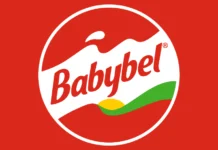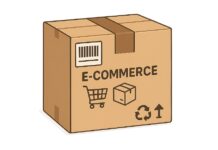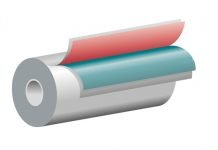Made up of a digitally savvy population with robust online spending, the e-commerce market in Canada is a lucrative expansion opportunity for many businesses. However, capitalising on this potential isn’t as simple as setting up an online store and shipping parcels north.
The true key to unlocking Canadian e-commerce growth lies in mastering the intricacies of customs clearance, particularly for the high volume of smaller, frequent orders that define modern online retail.
Efficient low value shipment clearance is a direct driver of customer satisfaction, faster delivery times, and ultimately, your retail business’s profitability and scalability in Canada.
The Modern E-commerce Landscape: High Volume, Low Value
Modern e-commerce is characterised by a deluge of individual orders, many falling into what customs agencies classify as “low value” shipments. For retailers, this means managing thousands, even tens of thousands, of small parcels each month. The traditional, manual approaches to customs clearance simply aren’t equipped to handle this scale efficiently, leading to:
- Delays: Backlogs at the border cause frustrating waits for customers.
- Increased Costs: Manual processing, unexpected fees, and storage charges erode profit margins.
- Poor Customer Experience: Slow deliveries and unexpected duty bills can lead to abandoned carts and negative reviews.
These challenges highlight the critical need for a streamlined e-commerce logistics strategy that includes optimised low value shipment clearance.
Understanding “Low Value Shipments” in Canada: LVS vs. De Minimis
When talking about “low value” shipments into Canada, it’s crucial for retailers to understand two distinct, yet related, concepts from the Canada Border Services Agency (CBSA):
- The De Minimis Thresholds: These thresholds determine whether duties and/or taxes are applied to a shipment.
- CA$20: Goods valued at CA$20 or less (from any country) are generally exempt from duties and taxes. This is the traditional de minimis for many international postal and courier shipments.
- Above CA$40 to CA$150 (from US/Mexico): Shipments from the United States or Mexico between this amount are exempt from duties, but taxes still apply.
- The Low Value Shipment (LVS) Threshold: This threshold is for shipments with an estimated value not exceeding CA$3,300 and pertains to the process of customs clearance.
Shipments valued at CA$3,300 or less can qualify for simplified, often expedited, clearance procedures. This allows for faster processing compared to higher-value commercial imports, reducing the administrative burden.
While many e-commerce parcels benefit from the de minimis exemptions, the larger volume of items falling under the CA$3,300 LVS threshold is where substantial efficiency gains can be made through optimised clearance processes. This is especially true for retailers who aggregate multiple small orders or whose products fall between the de minimis and LVS limits.
Optimizing Packaging for Low Value Shipments
One thing e-commerce retailers dealing with a high volume of low-value shipments into Canada should consider optimizing is their packaging. This is a critical element for cost efficiency, customer satisfaction and sustainability.
Here are some ways to optimize packaging for LVS:
- Right-Sizing: Use packaging that perfectly fits the product to minimize dimensional weight charges and reduce shipping costs.
- Lightweight Materials: Select light yet durable materials like thin corrugated or poly mailers to decrease overall parcel weight and freight expenses.
- Minimize Void Fill: Reduce or eliminate excess filler materials to cut costs and contribute to smaller package sizes.
- Multi-Item Optimization: Utilize cartonization software to efficiently group multiple items into the fewest possible parcels.
- Durability and Easy Opening: Ensure packaging protects goods during transit while still offering a simple and positive unboxing experience for customers.
- Sustainable Materials: Prioritize recyclable, biodegradable, or minimalist packaging to align with Canadian consumer values and environmental regulations.
- Enhanced Brand Experience: Incorporate subtle branding on packaging to elevate customer perception and encourage repeat business.
Why Efficient LVS Clearance is a Game-Changer for Retailers Breaking into Canada
A streamlined LVS process offers tangible benefits for your bottom line and customer loyalty:
- Accelerated Delivery: Streamlined customs clearance means less time held at the border. This translates directly to faster delivery times for your Canadian customers, a critical factor in today’s demanding e-commerce landscape.
- Reduced Operational Costs: Manual data entry, rectifying errors, and dealing with customs holds are time-consuming and expensive. Automated low value shipment clearance significantly reduces the administrative burden and associated labour costs.
- Enhanced Customer Satisfaction: Prompt deliveries and the absence of unexpected fees upon arrival create a positive shopping experience, encouraging repeat business and favourable reviews.
- Scalability: As your Canadian e-commerce sales grow, an efficient LVS system ensures your ecommerce logistics can handle increasing volumes without proportional increases in operational complexity or cost. You can scale your operations confidently.
- Better Inventory Management: Predictable customs clearance helps maintain optimal inventory levels, reducing the need for costly expedited shipping or holding excess stock in Canadian warehouses.
Automating Your Path to Canadian E-commerce Success

For retailers handling a high volume of cross-border shipments, relying solely on traditional customs brokerage methods or hoping for the best is not sustainable. The solution lies in leveraging technology designed specifically for low value shipment processing.
Specialised customs software like CrimsonLogic’s Canada LVS Express Clearance streamlines the import filing process, offering a range of powerful features to ensure compliance and improve overall efficiency:
- Effortless LVS Processing: Accelerate and simplify the customs clearance of high volumes of shipments—whether from your own warehouse or facilitated through platforms like Shein, Temu, or Amazon—with unparalleled speed and accuracy.
- Integrated Compliance Engine: Built-in validation and compliance checks ensure your shipments meet all CBSA requirements. This proactive approach helps to minimize delays, avoid costly penalties, and keeps your e-commerce logistics running smoothly.
- Seamless Integration: Designed for interoperability, CrimsonLogic’s solution integrates effortlessly with your existing trade workflows and e-commerce platforms. This minimizes setup time, reduces operational friction, and ensures a seamless data flow from order to delivery.
- Optimized Duty & Tax Management: The software also helps in managing duties and taxes, and for eligible returns, can even assist in automating duty recovery processes, further protecting your profit margins.
By embracing such solutions, retailers can transform what was once a complex, time-consuming bottleneck into a competitive advantage, empowering your e-commerce business to thrive.



























